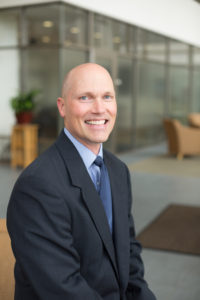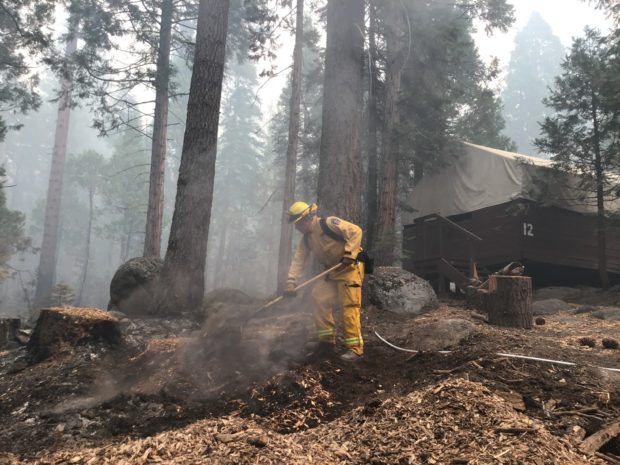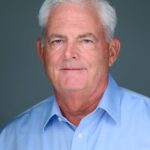The most innovative ideas in the insurance industry don’t always come from global mega insurers with large teams of technology experts that spend all their time devoted to imagining new ways of doing business.
Executive Summary
Guy Russ, AVP of Risk Control for Church Mutual, tells CM Guest Editor Mike Fitzgerald how the mission of a mutual and its “deeply ingrained cultural need” to help policyholders also helped to spark several innovations at the Wisconsin specialty insurer. Other factors for continued innovation include paying attention to consistent patterns of claims, the support of the chief executive and Russ’s understanding of how to manage partnerships with external technology providers.A Wisconsin-based specialist insurer with a workforce of just over 1,000 employees proved that a few years ago when technology that it made available free of charge to its policyholders—houses of worship and schools throughout the United States—started preventing burst pipe and freeze damage claims that otherwise would have disrupted their ministries and cost the insurer millions of dollars in aggregate claims.
Church Mutual’s “CM Sensor 24/7 temperature and water alert system” also earned the carrier recognition by Celent, which named the company as a “Celent Model Insurer in Innovation and Emerging Technologies” in 2017.
Guy Russ, assistant vice president of risk control at Church Mutual, explained how a consistent pattern of claims provided the impetus for the innovation during a recent interview with Carrier Management Guest Editor and Celent Senior Analyst Michael Fitzgerald. Russ also talked about how the 122-year-old insurer is reading similar patterns for other types of claims as it continues exploring innovative ways to use technology to do better for its policyholders and how the support of the carrier’s chief executive is making these activities possible.
Fitzgerald: How did the sensor technology innovation come about?
Russ: Like a lot of P/C insurers, we have a large portion of our book in property, so we have some repetitive natural causes of loss. Our CEO, Rich Poirier, saw a pattern of more consistent freeze events. After the polar vortex catastrophe in 2014, we recognized that we had to do something to break the pattern and prevent the losses altogether. That’s where the sensor program came in.
Hartford Steam Boiler was a great partner at that time in helping us to understand sensor technology that they had been experimenting [with] in their engineering groups. We started installing water and temperature sensors in properties to help alert our policyholders so they can act before a bad loss happens. Since 2016, we calculate that we have avoided $11.6 million in losses for our policyholders.

Now, we have a range of the types of sensors that we have available to us, and we put different types of sensors into different organizations based on their size and their need. That was an expansion effort for us this year—to make sensors available to some smaller organizations because we had some technologies that fit their needs.
Fitzgerald: What did you learn from the sensor program that you’ve applied to other efforts?
Russ: We launched our wildfire program at the beginning of June last year and are very excited about it…This isn’t directly a sensor-related item, but it came from the same thinking. As with sensors, it started with cause of loss frequency. In sensor, these were water and freezing. In property, a top cause of loss is fire. But really you can break that into two different types of fire situations. There’s a fire in a building, and then there are wildfires—a fire going on in an environment that engulfs a building. And what we were seeing again, through our claims history, was that wildfires were becoming more consistent and more prevalent. We recognized this consistency beginning, quantified the amount of dollars we are paying out in claims and decided that it made sense for us to try to find a prevention measure.
Fitzgerald: So, your organization found an innovation cadence based on cause of loss, frequency and then avoidance/mitigation.
Russ: Yes, exactly. But an important part of our approach was to fully quantify the value in building a response. We did this in three steps. First, we understood which properties are most susceptible to a wildfire risk. Two, we identified the specific characteristics of individual properties that might lead to a loss if there was a fire near them. Three, once we knew our exposures at this detailed level, we determined if we could provide a viable prevention measure if we know that there is a fire approaching.
We developed a program that we refer to as CM Wildfire Solutions which involves all three of those components. For now, this is just in the state of California. We have worked with partners to develop a risk score for areas that are more prone to wildfire. We then identified which accounts are inside of those zones. Knowing that, we prepared to go on site to assess those properties to find out whether there is some characteristic of the property that should be changed to lower the risk of a fire engulfing their property. If there is a wildfire approaching, we have contracted with companies to have fire trucks at our disposal that we can deploy to any of these properties and apply a fire-retardant gel to either their buildings or to the ground around them to prevent the wildfire from engulfing their buildings.

Fitzgerald: So, by spending more on mitigation, you’re increasing your value to your customer while lowering the insurance company payout for the cost of cleanup, repair and replacement.
Russ: We do calculate off those patterns what we think we’re spending in terms of our claims experience. But we also consider what we think the events cost our policyholders in terms of disruption—to their organizations and their missions. Based on that calculation, can we find either a prevention or mitigation mechanisms that we believe will be more cost effective in avoiding that altogether?
We have two instances of this innovation approach now and are developing this internal capability to go through those thinking patterns and those calculations. It’s a process of looking out in the world to say, “Are there businesses that operate around these risks where they’ve created a business model that we can leverage for either data or scoring, or the actual prevention measures?”
Fitzgerald: How do you make this a repeatable innovation capability going forward?
Russ: To create a capability inside the company to do that, we’ve established an innovation lab. Their job is to be on the lookout for these patterns, both from an analysis of our claims history as well as risks present in the world. They will then search for technology companies, including InsurTechs, to find those that are creating business models around these risks.
Fitzgerald: That is a very different way of working. What has the transition been like in moving to this new way of approaching the business?
Russ: Certainly, something that has helped gain support for these first two programs is the vision and backing of our president and CEO. Rich Poirier was very sure that this was the right direction. He convinced our board of directors to appropriate adequate funding and resources to be successful. So that helps.
But another key for us was the idea of not just jumping in whole hog into something that then you find doesn’t work and jumping out. Because that’s not a good thing for the company or our policyholders. We took an iterative approach through using traditional mechanisms like requests for proposals, proofs of concept and pilots.
For sensors, there were a lot of proof points that were needed. We invested two years of piloting, 2014 and 2015, before we solidified the program. After that, we put a lot of resources behind it starting in 2016.
Fitzgerald: Was the fact that you are a mutual insurer another key to success? I think that mutuals undervalue the advantages that they bring to the table regarding innovation.
Russ: Yes. I describe it as “a suspension of disbelief.” There is a deeply ingrained cultural need at Church Mutual to want to do better things for our policyholders, which I think sets us up for easier success with new innovations. It is an underlying part of our culture that I think helped create support for these new approaches.
Fitzgerald: So, where to from here? What do you see as being the priorities going forward?
Russ: Now that we have the lab, we’re undertaking the change management actions to help with our cultural shift. There are many questions throughout the organization: What does having a lab mean? What are those people going to be doing? How do they fit with our existing processes? What does it mean to think creatively and entrepreneurially?
We are also launching our innovation council. This group is made up of senior leaders in the company that will help to organize the pipeline of ideas that will come through the lab. They will also be the early sponsors and advocates for those early stage ideas. As ideas move through different stages of becoming firmed up or more robust, we want to make sure we have senior-level leadership from the very beginning. We also want to know that we are not spinning our wheels on things that, once they’re successful and ready to come out of the lab, aren’t going to have an operational home or an operational advocate.
Finally, we are also working on some bottom-up initiatives. In March, we are launching our first companywide innovation challenges. We will solicit creative, innovative, entrepreneurial ideas from our workforce, and [we] have a process for those ideas to move through that will prioritize them based on peer voting. To accomplish this, we have been working with a Milwaukee-based provider of innovation management software, which is also helping us from an advisory perspective—helping us to put the challenge program together—and then supplying a software tool to promote the innovation challenges and facilitate the voting.
Fitzgerald: What final key success factor would you share with other innovators?
Russ: Successfully managing partnerships is a huge, huge part of this work. This is where I draw heavily on my background. In my career, I’ve gone in and out of consulting and private companies. And so that’s given me a seat on both sides of that table in terms of either being a business partner or managing business partners.
There is a lot of effort that goes into managing business partner relationships to make sure that we continue to be on the same page and aligned as we’re moving forward with these efforts. And, of course, we want to move quickly through many iterations. Speed creates a business cycle with partners that requires lots of visibility and transparency on what’s happening from both sides.
And that’s really what we try to emphasize. So, not setting up this adversarial vendor relationship where I’m trying to get everything I can out of you for the lowest possible price. But instead, being business partners in looking at these ideas and saying, “How can we make this good for both of us? And how do both groups get something out of it?”
In some cases, we are working with very established partners like Hartford Steam Boiler. In others, especially in the case of the lab, we’re working with relatively young startups—InsurTechs that have an idea that hasn’t caught on yet but one in which we see value. We want to jump in with them and work together. But how we contract with them has to be different—and how we work with them, especially on proofs of concept. Making sure that can be valuable for both of us is different than working with a more established player.




















 Unpacking a Consumer Intervenor’s Novel Idea
Unpacking a Consumer Intervenor’s Novel Idea  Why Insurance Telematics Integrations Fail
Why Insurance Telematics Integrations Fail  Aon Adds to List of Brokers Suing Howden US for Alleged Poaching, Theft
Aon Adds to List of Brokers Suing Howden US for Alleged Poaching, Theft  Chubb, The Hartford, Liberty and Travelers Team Up on Surety Tech Co. Launch
Chubb, The Hartford, Liberty and Travelers Team Up on Surety Tech Co. Launch 



